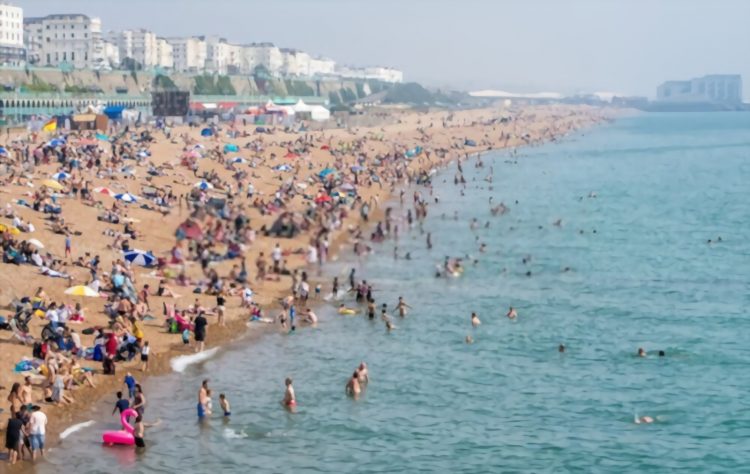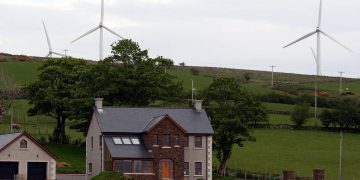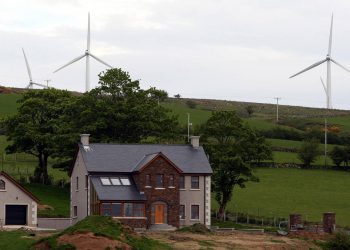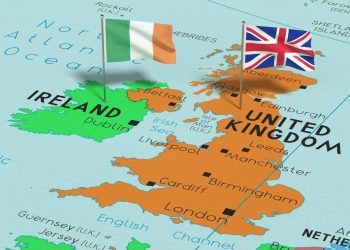The UK Heatwave2022 was caused by a low-pressure system over the North Atlantic that produced a slingshot effect, firing a plume of hot, dry Saharan air northwards. The land is baked with little moisture to evaporate and no clouds to block the sun’s rays.
People on social media have been comparing the high temperatures in much of the UK with the heatwave of 1976, suggesting that the severity of the current hot weather is being exaggerated.
The peak that year was 35.9 ℃. That has been beaten by the current temperatures, with 40.3℃ recorded. The heatwave of 1976 started in June and lasted for two months. There was a lack of rainfall and a significant drought, with the government enforcing water rationing.
UK Heatwave2022 was rare for that decade. The average maximum temperature in July in the 1970s was 18.7℃. In the 2010s, it was more than 20℃. The UK has been slowly warmer since the 19th Century, which has sped up. The country has become 0.9℃ warmer in the past three decades, according to the UK State of the Climate report in 2020.
Last week, the UK. Health Security Agency issued its highest level four heat alert, warning illness and death could occur “among the fit and healthy”.
The Met Office has put the warning in place saying that people could experience “adverse health effects”, such as sunburn or heat exhaustion, and transport delays during hot weather.
The Met Office estimates that UK Heatwave2022 has been made ten times more likely because of climate change.
This has brought more extreme weather. Periods of intense heat do occur within natural weather patterns, but they are becoming more frequently worldwide, more intense and lasting longer due to global warming.
An official drought was declared in eight areas of England on Friday by the National Drought Group, which comprises representatives from the government, water companies, the Environment Agency and others.
Three water companies – Welsh Water, Southern Water, and South East Water – have imposed hosepipe bans. In contrast, Yorkshire Water has announced that a ban will start on 26 August, and Thames Water is planning one in the coming weeks.
England’s water level is now the lowest it has been since 1995, with most reservoirs now being “shallow”, according to figures from the Environment Agency. Yorkshire Water joined the raft of local providers implementing hosepipe bans after the driest July on record for some areas and the driest first half of the year since 1976.
According to the Met Office, the official definition of a heatwave is when a location in the UK records a period of at least three consecutive days with the daily maximum temperatures meeting (or exceeding) the heatwave temperature threshold, which varies by county.
Announcing their report on the recent heatwave, the Met Office described it as a milestone in UK climate history.’
Heatwaves are likely to become more common in the UK. Although weather experts aren’t usually keen to link specific weather events to climate change, the current trends in warm weather have had many meteorologists talking about the effect of high emissions on our climate.
Met Office Chief Scientist Professor Stephen Belcher said: ‘In a climate unaffected by human influence, climate modelling shows that temperatures in the UK can’t reach 40°C. “Under a very high emissions scenario, we could see temperatures exceeding 40 degrees as frequently as every three years by the end of the century in the UK,” said Belcher.
Heat waves of this magnitude and duration can be deadly and pose health risks to vulnerable groups like the elderly, those with preexisting medical conditions, and anyone without access to cooling. Only about 3% of homes in the UK have air conditioning.
According to climate scientist Simon Lee, 3 of the four hottest days in UK history have occurred during the last four years.
Scotland also set a provisional all-time high-temperature record, with a reading of 94.82°F (34.9°C) in Charterhall. The scorching heat has disrupted air and rail travel in the UK. This heatwave is not limited to the UK; Paris also saw temperatures exceeding 40°C, at 104.9°F (40.5°C) for the third time on record. More than 1,100 people have died in Spain and Portugal from heat-related causes since the heat wave began.
The hot weather has already led to several wildfires across England, with the latest blaze breaking out in the North York Moors national park.
The heat has also sparked massive wildfires in France, Portugal and Spain, forcing thousands of people to flee their homes. Fires broke out Monday in the UK, including in populated areas.
Fire has spread across 27,000 acres in the Gironde department of southwest France, forcing 32,000 people to evacuate, the local prefecture said Monday night.
The nearby town of Cazaux recorded 42.4 degrees Celsius (108.3 degrees Fahrenheit) on Monday, the hottest it has seen since its weather station opened more than 100 years ago in 1921, according to the French national meteorological service Météo France.
Significant cities in Western France, such as Nantes and Brest, also hit new heat records.
Reuters reported that wildfires swept the central region of Castile and Léon and the northern part of Galicia Sunday in Spain. Fire also forced the state railway company to suspend service between Madrid and Galicia.
Enter your email to sign up for the Wonder Theory newsletter.
More than 70,000 hectares have been destroyed in Spain because of fires this year. “Seventy-thousand hectares, to give you an idea, is almost double the last decade’s average,” he said.
Nearly half of Europe’s territory, including the UK, is “at risk” of drought, researchers at the EU Commission said Monday.
The Joint Research Centre highlighted that the drought in much of Europe is “critical” as the “winter-spring precipitation deficit … was exacerbated by early heatwaves in May and June.”
The World Weather Attribution service finds that climate change made the heatwave 4C hotter and at least ten times more likely than it would have been without greenhouse gas emissions.
According to the study, even in today’s climate, a heatwave of this intensity is “rare” – with a 1% chance of happening each year. However, the study warns that some of its results are “conservative”. One author told a press briefing that current climate models systematically underestimate extreme temperatures in western European summer. She says that “10 times more likely” is a lower bound estimate.
Prof Fredi Otto – a senior lecturer at the Grantham Institute for Climate Change and the Environment at Imperial College London, believed The UK “has minimal experience with extremely high temperatures”. Otto says this was part of the rationale for running an attribution study on the UK.
The extreme heat in Europe and heat waves seen in Asia and North America this summer need not foster hopelessness, says NASA climate scientist Kate Marvel.
- “It’s hard for me to hold two truths simultaneously in my mind, but I have to,” she told Axios via email from the UK.
- “The first truth is that we live in a nightmare. This is exactly what climate models projected to happen: intensifying extreme weather, severe public health consequences, and incredibly frustrating Congressional inaction. There is no reasonable scenario where the warming stops at 1.2°C, so it’s going to get worse,” she said.
- “The second truth is that we live in a world where things have changed beyond my wildest dreams. Clean energy is dirt cheap compared to fossil fuels, electric cars will soon be widely available, and state and local governments are proposing (and passing!) policies to cut emissions,” she said.
“The future is going to be worse. But, if we refuse to give up, it’s going to be better, too,” Marvel said.





























